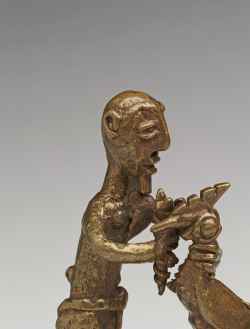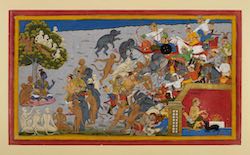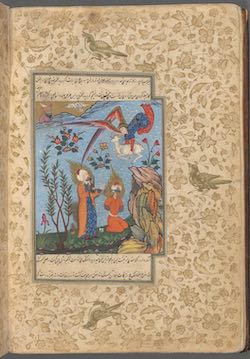Scene of cow sacrifice on a relief brass plaques
Year: 16th-17th
From: Benin City, Nigeria
Location: British Museum, London
Edited by: Chiara Petrolini
Related Documents:
a man sacrificing a fowl to one of the best known charms among the Akan, the nkabere charm. (18th-20th)
from: Ghana (The Kyekyere Nkabere charm (lit. to tie or bind the nkabere) was a common rite carried out throughout the Asante region during the pre-colonial and early colonial era).
British Museum, London
Keywords: AfricaAnimal Sacrifice
Sacrifice of leopards was the prerogative of the king. Captured leopards were sacrified at the annual Igue ceremony. (16th-17th)
from: Benin City, Nigeria [Benin Brass Plaques]
Rāma sends out his entire army, headed by Lakṣmaṇa and Vibhīṣaṇa, to fight Indrajit at the Nikumbhilā grove, where he is performing more magical sacrifices. Indrajit is sacrificing to the fire again with a black goat, while around him a furious battle is raging between Lakṣmaṇa and his allies and the other demons. Vibhīṣaṇa has advised Rāma to send Lakṣmaṇa to finish off Indrajit at the place where he is performing his magical arts, before he can make himself even more powerful. Inscribed above Indrajit: Iṃdrajit. (ca 1653)
from: Ramayana [ms Add. 15297(1), fol. 115]
British Library, London [from Udaipur]
Ibrâhîm [Abraham] Sacrifice of his Son Ismâ'îl (1577)
Public Library, Spencer Collection, Persian, ms. 1, New York
Queen Nzinga sacrifices a man [illustration of Dapper Naukeurige beschrijvinge der Afrikaensche gewesten] (1676)
from: Olfert Dapper, Naukeurige beschrijvinge der Afrikaensche gewesten, Amsterdam, Meurs,1668, p. 238






